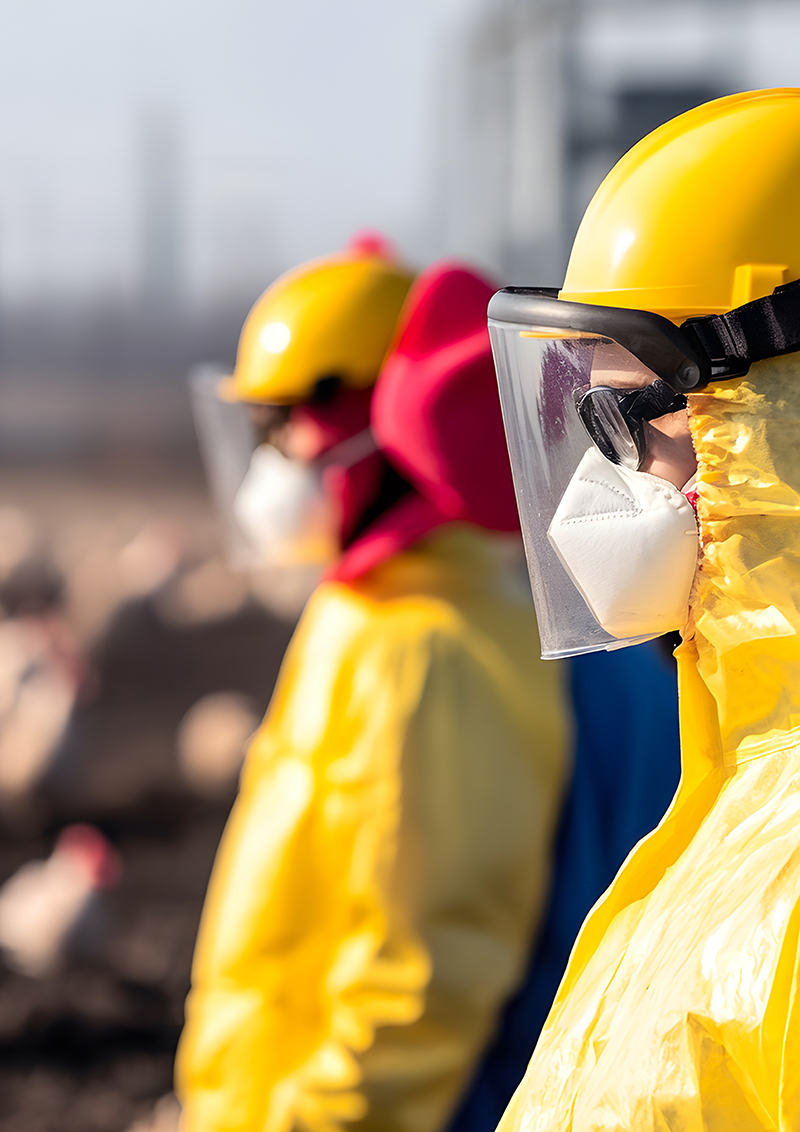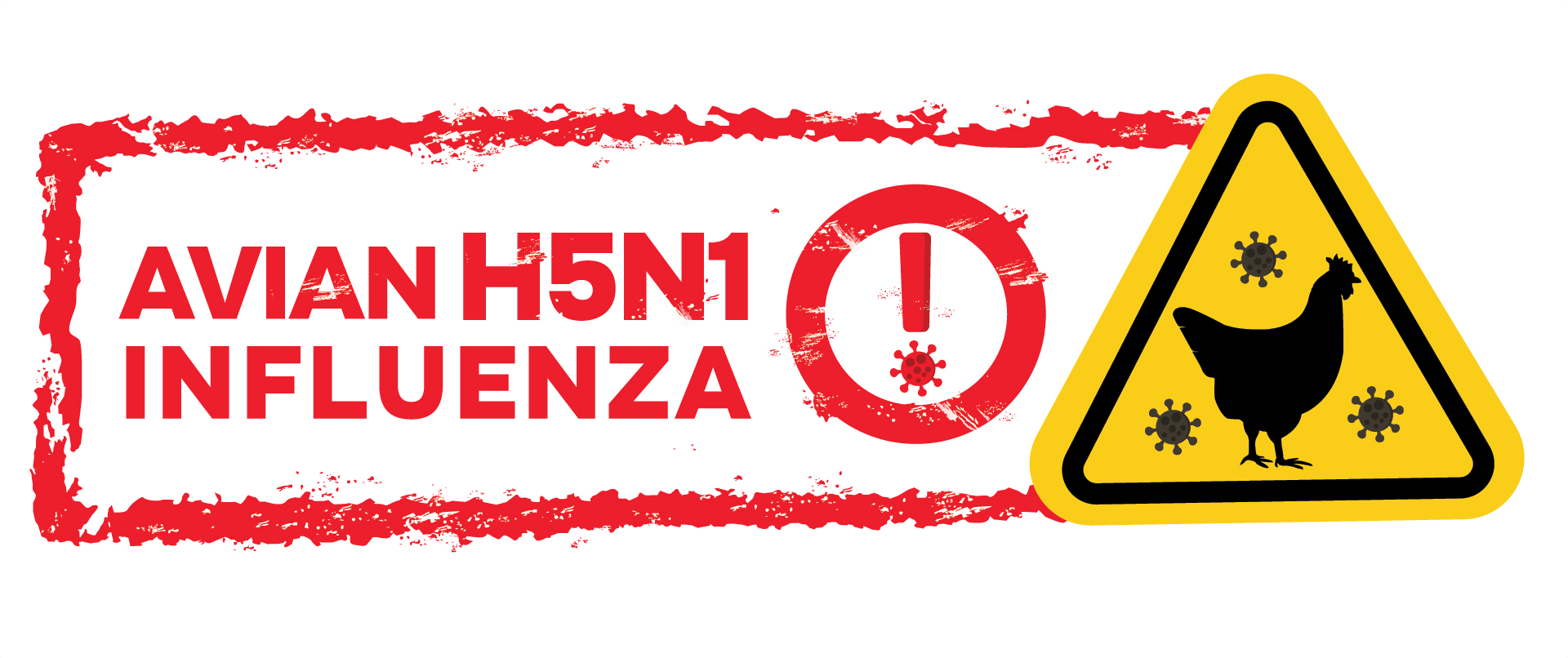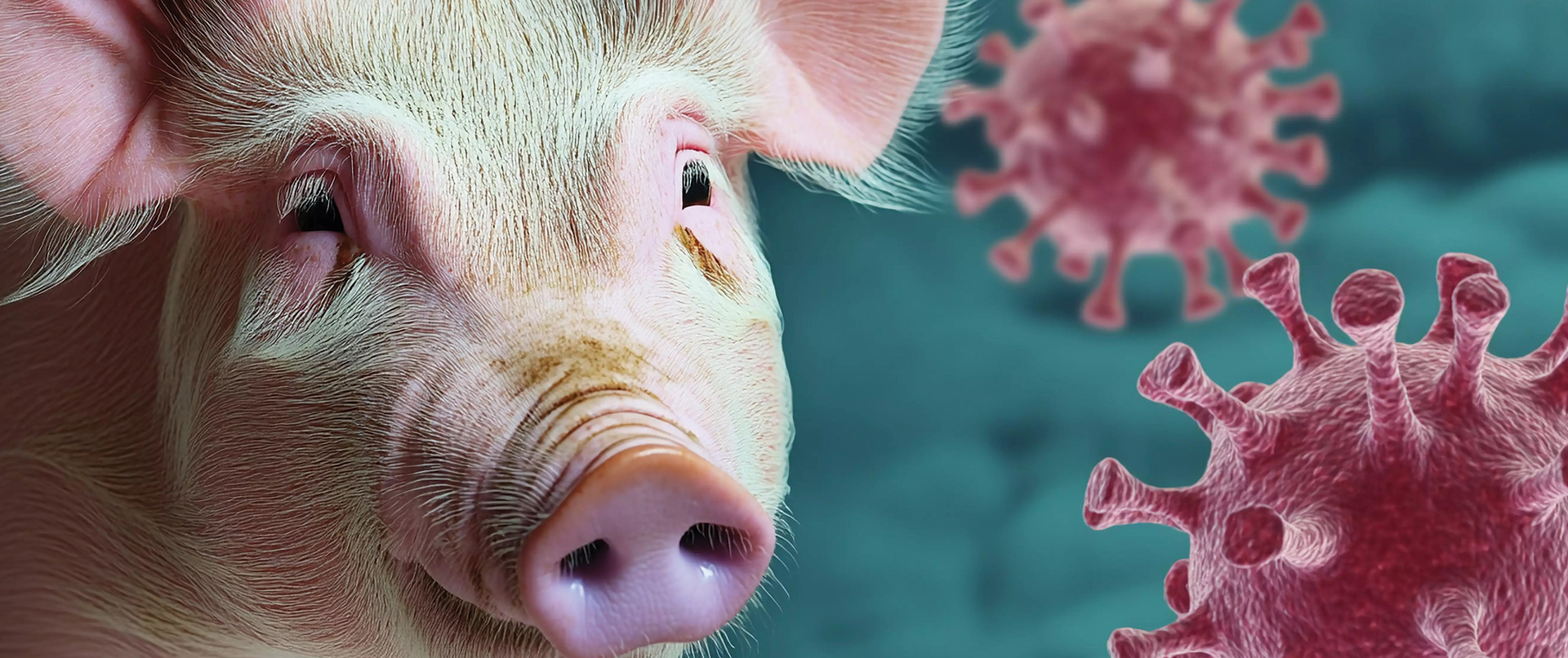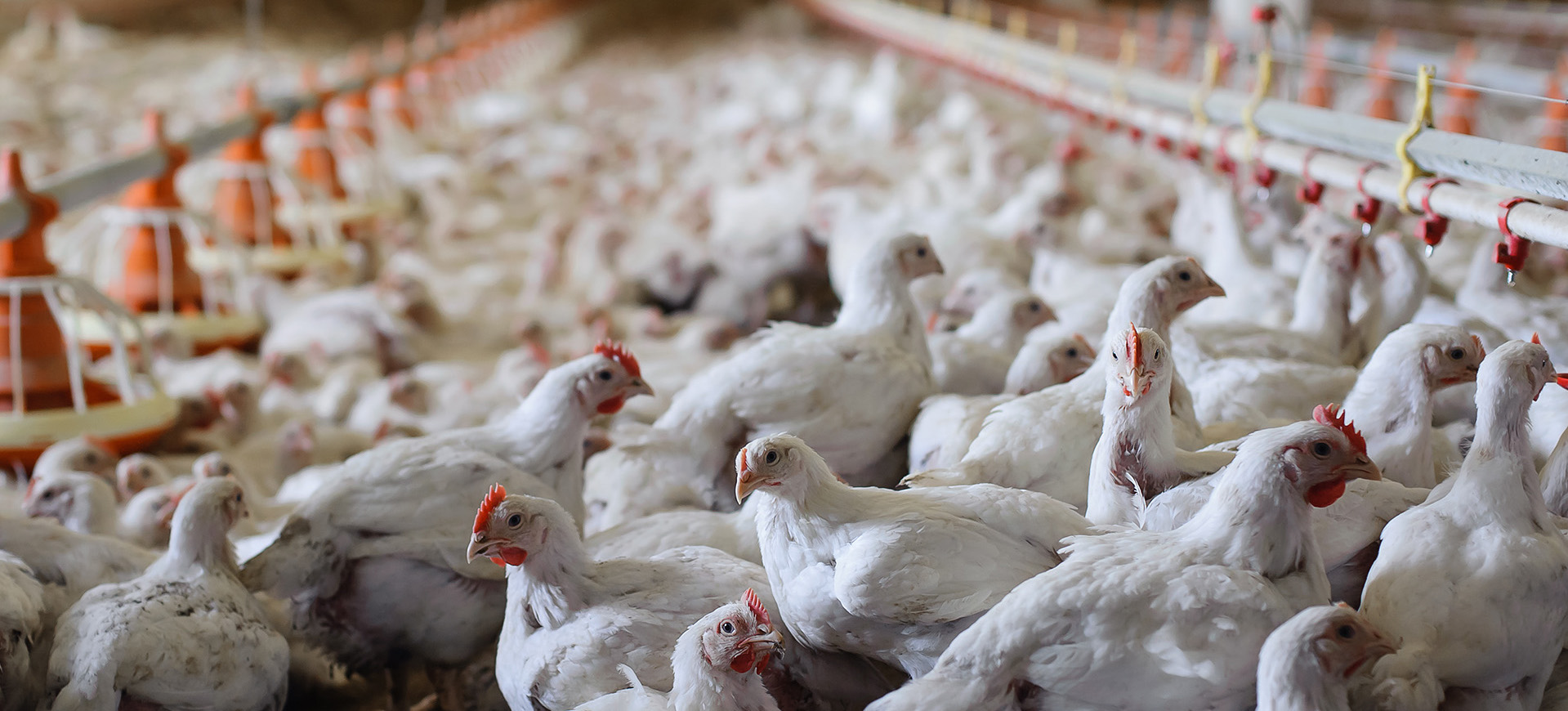Agricultural Biosecurity
Avian • Beef • Pork

For more details on the procedures described above, please contact the Office of Alberta’s Chief Provincial Veterinarian at 780-427-3448. You can call toll-free in Alberta by first dialing 310-0000.
Services
Controlling diseases associated with animal production continue to be significant to Alberta to protect animal health, prevent economic hardship and ensure the livelihoods of our producers.
Some poultry & livestock diseases can have a devastating impact, and they must be reported to the province–for monitoring and disease control. If you suspect a reportable disease like avian influenza, please contact the Office of Alberta’s Chief Provincial veterinarian.
Effective cleaning and disinfection in between flocks & herds will reduce the likelihood of spreading diseases to your new flock or herd. Follow this four-step process (dry cleaning, washing, disinfecting and drying) before replacing a flock or herd.


Dry Cleaning
Once all the animals have been removed from the barn:
Remove nesting material. Compost or burn all organic material in compliance with your municipal bylaws. Scrape and sweep all surfaces including walls, ceiling, roosts, floors, ramps, etc. If the floor is dirt, it is recommended that the top 3 cm of soil be removed and disposed of with the organic material.
Remove and dispose of any leftover feed and medications that have been used for the animals in question.
(This part MUST be completed prior to Bully Blasters visiting the site for disinfecting)
Washing
- Wash building surfaces with a detergent using a pressure washer and hot water. Follow the product manufacturer’s instructions. If you do not have access to a pressure washer, use a garden hose and scrub brush to remove all remaining organic material.
- Soak barn equipment in soapy water. Scrub to remove all organic material. Wash tools including shovels, etc.
- It is essential to remove as much of the remaining organic material as possible in this step.
- Rinse surfaces thoroughly with clean water and let the building, equipment and tools completely dry in the sun before applying disinfectant.

Disinfecting
follow the product manufacturer’s recommendations
- Organic material. Disinfection will only be effective if surfaces are completely clean (none-to-minimal organic matter) as most disinfectants are inactivated when they come in contact with organic material.
- Concentration and contact time. Follow the product manufacturer’s recommendations.
- Apply disinfectant with a sprayer ensuring complete coverage of all surfaces of the building and equipment. Alternatively, equipment may be disinfected by submerging it in a bucket or tub.
- Where recommended by manufacturer, rinse disinfectant off with clean water.
